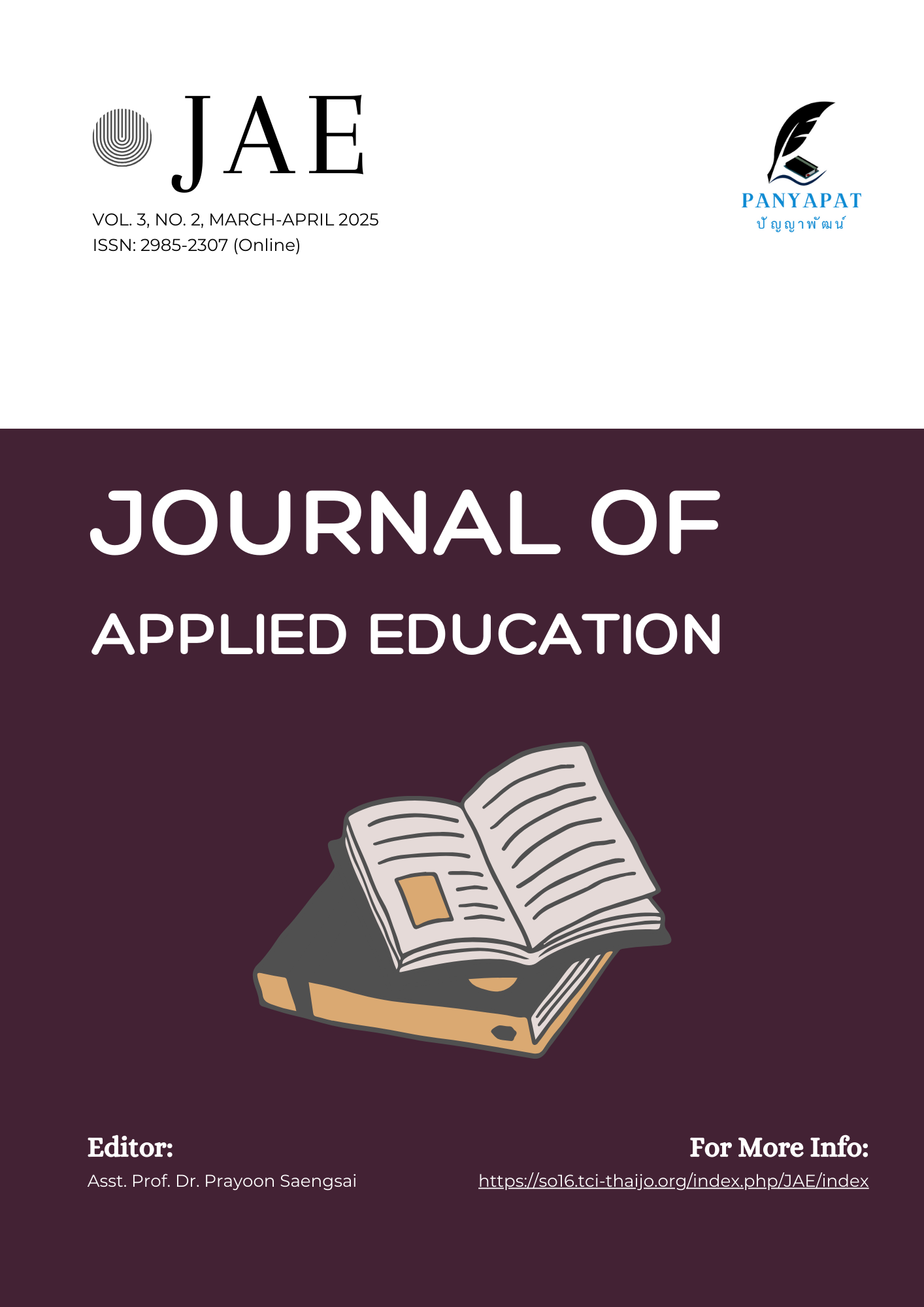The relationship between artificial intelligence adoption and on job satisfaction of Phetchabun Primary Educational Service Area 2
Main Article Content
Abstract
This research aimed to study (1) the acceptance of artificial intelligence technology in educational institutions under the Office of the Primary Educational Service Area 2, Phetchabun, (2) job satisfaction in educational institutions under the Office of the Primary Educational Service Area 2, Phetchabun, and (3) the relationship between the acceptance of artificial intelligence technology and job satisfaction in educational institutions under the Office of the Primary Educational Service Area 2, Phetchabun. The sample consisted of 302 educational institution administrators and teachers under the Office of the Primary Educational Service Area 2, Phetchabun, consisting of 28 educational institution administrators and 274 teachers. The sample size was determined from a ready-made table by Krejci and Morgan. The sample was obtained by stratified random sampling according to the population proportion and the size of the educational institution. The data collection tool was a 5-level rating scale questionnaire. The statistics used for data analysis were frequency, percentage, mean, standard deviation, reliability, and Pearson’s product moment correlation coefficient. The result of the study found that: 1) the study on the acceptance of the use of artificial intelligence technology in educational institutions were at a high level overall. When considering each aspect, it was found that the aspect with the highest average value was attitude towards usage behavior, and the aspect with the lowest average value was the environment supporting the use of technology. 2) The results of the study on the satisfaction with work in educational institutions were at a high level overall. When considering each aspect, it was found that the aspect with the highest average value was the desire to be a member of society, and the aspect with the lowest average value was physical needs. 3) The results of the study on the relationship between the acceptance of the use of artificial intelligence technology and satisfaction with work in educational institutions under the Office of the Primary Educational Service Area 2, Phetchabun, found that overall, there was a positive relationship.
Article Details

This work is licensed under a Creative Commons Attribution-NonCommercial-NoDerivatives 4.0 International License.
References
กรุงเทพธุรกิจ. (2561). พฤติกรรมการยอมรับนวัตกรรม. สืบค้นจาก https://www.bangkokbiznews.com/blogs/columnist/120514.
พิชชาพร ดีชู และ ชิณโสณ์ วิสิฐนิธิกิจา. (2565). สภาพแวดล้อมในการทำงานที่มีผลต่อความพึงพอใจในการปฏิบัติงานของเจ้าหน้าที่พยาบาล โรงพยาบาลตำรวจ. วารสารวิชาการ มหาวิทยาลัยราชภัฏกาญจนบุรี, 11(1), 40-52.
วิไลวรรณ วรางคณากูล. (2563). ปัจจัยที่ส่งผลต่อความพึงพอใจในการปฏิบัติงานของข้าราชการครู สังกัดสำนักงานเขตพื้นที่การศึกษามัธยมศึกษา. วารสารวิชาการมหาวิทยาลัยราชภัฏกาญจนบุรี, 9(1), 104-118.
สมศักดิ์ คงเที่ยง และ อัญชลี โพธิ์ทอง. (2562). ความพึงพอใจในการปฏิบัติงานของครูโรงเรียนประถมศึกษา สังกัดสำนักงานคณะกรรมการการศึกษาขั้นพื้นฐาน. วารสารศึกษาศาสตร์ มหาวิทยาลัยบูรพา, 30(1), 47-59.
สำนักงานเขตพื้นที่การศึกษาประถมศึกษาเพชรบูรณ์ เขต 2. (2567). แผนพัฒนาคุณภาพการศึกษาขั้นพื้นฐาน ระยะ 5 ปี (พ.ศ. 2566-2570) ประจำปีงบประมาณ พ.ศ. 2567. เพชรบูรณ์: สำนักงานเขตพื้นที่การศึกษาประถมศึกษาเพชรบูรณ์ เขต 2.
สำนักงานพัฒนารัฐบาลดิจิทัล. (2563). การเตรียมบุคลากรภาครัฐให้พร้อมรับการเปลี่ยนแปลงเทคโนโลยี. กรุงเทพฯ: สำนักงานพัฒนารัฐบาลดิจิทัล (องค์การมหาชน).
Al-Abdullatif, A. M. (2024). Exploring faculty perceptions and acceptance of AI-based teaching assistants: A mixed-methods study in Saudi higher education. Education and Information Technologies, 29(3), 2795-2825.
Cazares, C. (2024). Teacher acceptance of artificial intelligence tools: Examining the role of perceived benefits and concerns in K-12 education. Contemporary Educational Technology, 16(2), 1-18.
Cronbach, L. J. (1990). Essentials of psychological testing. (5th ed.). New York: Harper Collins.
Hazaimeh, W. A., & Al-Ansi, A. M. (2024). Investigating the factors influencing the acceptance and adoption of artificial intelligence in higher education institutions during post COVID-19. Education and Information Technologies, 29(3), 2827-2851.
Krejcie, R. V., & Morgan, D. W. (1970). Determining sample size for research activities. Educational and Psychological Measurement, 30(3), 607-610.
Maslow, A. H. (1970). Motivation and personality. (2nd ed.). New York: Harper & Row.
Ofosu-Ampong, K. (2024). Artificial intelligence adoption in higher education: Faculty perspectives on GPT tools. Education and Information Technologies, 29(4), 4345-4374.
Sihan, M., & Ma, W. W. K. (2024). Faculty perspective on the implementation of generative AI in higher education. Education and Information Technologies, 29(4), 4023-4044.
